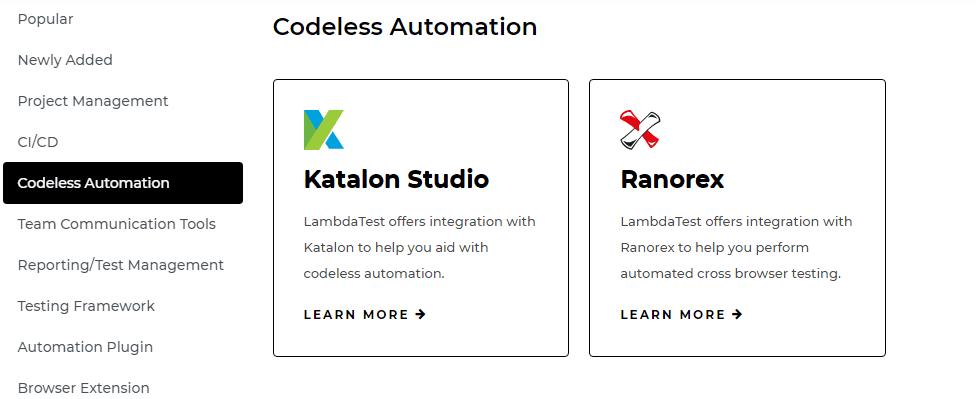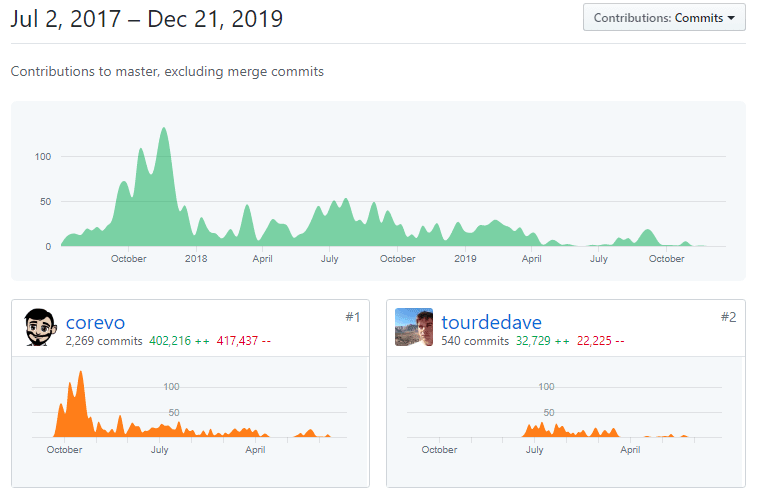Top Automation Testing Trends To Look Out In 2020
Himanshu Sheth
Posted On: January 15, 2020
![]() 126012 Views
126012 Views
![]() 16 Min Read
16 Min Read
Quality Assurance (QA) is at the point of inflection and it is an exciting time to be in the field of QA as advanced digital technologies are influencing QA practices. As per a press release by Gartner, The encouraging part is that IT and automation will play a major role in transformation as the IT industry will spend close to $3.87 trillion in 2020, up from $3.76 trillion in 2019.
Test automation is always at the forefront when it comes to software testing and is evolving rapidly. Every year we are being introduced to new test automation frameworks, test runners, libraries, methodologies, and more! In this article, we will look at the top automation testing trends for 2020.
If you’re new to Selenium and wondering what it is then we recommend checking out our guide – What is Selenium? If you are preparing for an interview you can learn more through Automation Testing Interview Questions.
Selenium 4 Will Be At The Centre-Stage Of Automation Testing
The selenium test framework is synonymously used for automated browser testing and Selenium 4 is one of the most awaited versions of the framework. Selenium 4 not only has a number of feature improvements like better docker support, identification of parent frame, and better-formatted commands to access a Selenium Grid but also has a bulk of new features.
Some of the new features in Selenium 4 are the support of relative locators, better windows & tab management of web browsers, support for native Chromium driver for Microsoft Edge browser, and more. We have already tested the alpha version of Selenium 4 and are quite bullish about what the stable release of Selenium 4 will bring to the table. The latest Selenium version should be the top automation testing trends in 2020 as it will be eagerly watched by all test automation enthusiasts.
Codeless Automation Testing To Rise Again In Popularity
Selenium automation testing is widely used as the Selenium framework is supported by popular programming languages like C#, Python, Ruby, Java, JavaScript, etc. Hence, the development of test cases related to automated browser testing requires programming knowledge to work with Selenium WebDriver or Selenium Grid.
Codeless automation testing tools are built on AI technology and visual modeling allows accelerated creation of test cases that cater to Selenium automation testing. Using these tools, testers can create test scenarios without any coding knowledge and minimize the time spent on repetitive test cases. Increased adoption of codeless automation tools will be one of the automation testing trends in 2020 to watch out for.
LambdaTest also provides integrations with Codeless automation tools.

Test Automation Frameworks To Enable Testing At Multiple-Tiers
The advantages of using test automation frameworks that enable testing of applications at multiple layers are multifold. These frameworks not only accelerate the activity associated with automation testing but also provide integration into the DevOps build environments. Selenified is one such popular test automation framework that has powerful features like traceable reporting, the ability to invoke dynamic waits, custom reporting, and much more.
Selenium Waits: Implicit, Explicit, Fluent And Sleep
It can be used for extensive testing of a web application, be it for automated browser testing or testing at an API level. As the tool is built on top of TestNG, it is ideal for beginners as well as experienced professionals who are into automation testing. The other major advantage of using Selenified is that it can be easily integrated into the DevOps build environments as there is built-in support for tools like Maven, Gradle, Ant, etc.
Read More: Run Your First TestNG Automation Script
As organizations that are into the development of web apps/websites become more aggressive on the automation testing front, tools like Selenified will gain prominence in 2020. The primary reasons are the powerful features of the tools and seamless integration with cloud-based cross browser testing tools such as LambdaTest. If you are aware of Selenified then be sure to check out LambdaTest integration with Selenified.
QAOps To Be Adopted At A Wider Scale
QAOps is a new flavor of DevOps where the software QA team and operations team work together in close collaboration to deliver a quality software product. QAOps improves the overall software delivery process resulting in a more integrated and seamless operational software model. QAOps is about applying the core fundamentals & learnings of DevOps to the QA process.
QAOps results in better collaboration between the developers, testers, and the product team as the testers would no longer work in silos.
What Is QAOps? And Why It Matters For Your Web Application?
In 2020, we expect more software product organizations to use QAOps to streamline their QA process and reap the benefits of DevOps in the Quality Assurance/Software Testing department.
Run Selenium, Cypress, and Appium tests on LambdaTest to scale with the demand of your website and web apps.

Self-Healing Test Automation Will Gain Traction
Artificial Intelligence (AI) and Machine Learning (ML) are being widely used to not only solve a distinct problem but also to optimize the process of development & testing. AI is leveraged in testing to reduce the test lifecycle and is used in all aspects of testing including automation testing, performance testing, functional testing, regression testing, etc.
To achieve the goal of autonomous testing and harnessing the power of AI in testing, AI has to become an integral part of software testing tools. Each test cycle generates tons of data and that data can be used for identifying and resolving test failures. After each test run, the data/learning can be fed back to the AI/ML algorithms. This data will train the algorithm and that learning will help the test tool to identify the ‘expected behavior’ for those tests. This enables decision-making at runtime as the tool is in a position to flag a test as ‘failed’ in case there is any deviation from the expected behavior.
Such scenarios are very frequent in automated browser testing, where Selenium scripts are written to interact with a particular element (on a web page) identified by elementID/XPath. However, the absence of that element on the page can break the test. With AI-based learning, the tool can identify an ‘alternate’ element on the page that can be used in place of the expected element so that automated browser testing can proceed. With the increased usage of AI/ML in the development of test tools, the tools can self-heal at runtime. Self-healing automation testing will be one of the biggest automation testing trends in 2020.
Distributed Cloud For Cross Browser Testing To Become A Lifeline
Selenium automation testing approach on the local Selenium Grid is not scalable and this shortcoming has prompted many enterprises to shift their automated browser testing activities to cloud-based platforms. With the rise in the number of devices (with different screen sizes and form factors) being released each year, cross browser testing on-cloud seems a more viable option.
With a growing customer base spanning across multiple countries & continents, there could be intermittent delays in the test execution if the tests are being executed on a cloud-hosted in a faraway location. The adoption of distributed cloud will rise exponentially in 2020 thereby improving the speed and efficiency of test execution.
LambdaTest has been leveraging the advantages of distributed cloud computing so that its users can perform web automation testing in an efficient and scalable manner. Usage of the distributed cloud for automated browser testing is one of the automation testing trends in 2020 that will be on the radar of cloud technology and automation testing enthusiasts.
AI and ML Will Be At The Forefront Of Automation Testing
During the process of product development, there might be a number of test scenarios that fail when there are underlying changes in the UI of the web product. This sight is very common for any type of web product (website/web application). The downside is that developers need to spend a considerable amount of effort to accommodate changes in the test code.
AI will also be used to tackle challenges related to image recognition as AI algorithms are capable of capturing and analyzing data on the DOM. Machine Learning algorithms will go mainstream with UI testing as the user interface can be broken down at pixel level. The image patterns obtained via AI/ML algorithms can accelerate the testing of UI interfaces.
Hyper Automation To Be Used Extensively
Hyper Automation is a combination of tools including AI, ML, Natural Language Processing (NLP), Robotic Process Automation (RPA) that are used to leverage the advantages of AI-driven decision making. Hyper automation tools enhance human productivity by automating mundane processes that do not require any human intelligence.
Organizations are expected to use a combination of AI and RPA for test automation and analysis of automation reports. Hyper automation is one of the automation testing trends in 2020 that will be in huge demand.
AutoScaling CI/CD Runners To Support Parallel Testing
Automation testing is an effort to save time by fast-tracking the test cycles but the only way to unleash maximum benefits is by parallel test execution. The ability to run a test script over multiple test environments simultaneously, or testing multiple test scripts simultaneously. Enterprizes in 2020 will look forward to implementing automation testing through frameworks such as Selenium Grid which supports parallel testing. You can opt for on-premise parallel testing or can opt for a cloud-based Selenium Grid provider such as LambdaTest. LambdaTest will allow you to run your test cases in parallel on 2000+ real browsers.
The DevOps teams will look forward to autoscaling CI/CD runners to match up the pace of agile as the testing department will leverage the ability to run test cases in parallel. These autoscaling runners will manage the ups & downs over various servers on their own to efficiently manage queues in case of parallel testing. That way, teams can go for optimal consumption of resources without having their developers to wait for builds.
GitLab provides an autoscaling runner. You can read about it in their official documentation. LambdaTest offers integrations with GitLab for project management and continuous integration.
More Enterprizes To Lean Towards Shift-Left Testing
With the evolution of Agile and other methodologies, testing is no longer performed at the end of the development lifecycle. On the other hand, the shift-left testing approach is used extensively as it enables testing to be performed much earlier in the product life cycle. There are a number of benefits of shift-left testing – reduced costs in development & testing, early detection of bugs, and timely communication between the development & testing teams.
In the shift-left testing approach, the development and testing teams work in tandem to achieve common goals. Shift-left testing techniques are instrumental in detecting bugs at an early-stage of product development as their detection at a later-stage can hamper the timelines of product development and release. Shift-left testing will be one of the key automation testing trends in 2020 as more organizations plan to leverage the benefits of this testing approach.
Selenium IDE To Make Record and Playback Testing Much Convenient
‘How many of you use the Selenium IDE for automation?’ might not look like a relevant question in today’s times when record & playback testing seems a thing of passé. As it is rightly said – ‘There is light at the end of the tunnel’ and the same applies for the Selenium IDE. Selenium IDE is not dead, in fact, the revamped IDE and its code are freely available on GitHub. The Selenium IDE project is managed by the Selenium Community.

If you are into Selenium automation testing, the news that Selenium IDE is cross-browser i.e. available as extensions/add-ons on Chrome, Firefox, etc. will sound like sweet music to your ears☺. Selenium IDE Runner lets you execute tests on Selenium WebDriver servers and also supports Parallel execution of test cases/test suites. That’s not all; Selenium IDE has been redesigned to support Continuous Integration and Codeless Automation.

Dave Haeffner who has been actively contributing to the Selenium IDE project envisions incorporation of ML/AI algorithms in a future release of Selenium IDE. With Selenium IDE again gaining traction, Record and Playback testing are likely to also gain more prominence in 2020. To summarize, ‘development of Selenium IDE’ and ‘revival of playback & record testing methodology’ will one of the eagerly watched automation testing trends in 2020.
Crowd-Sourced Testing To Gain Prominence For Automation Testing
The advent of multi-experience has prompted organizations to look beyond in-house testing resources. Though efficient test automation techniques are being widely used by companies (large enterprises and startups), the field of automation testing is rapidly undergoing democratization.
Crowd-sourced testing is gaining prominence as organizations look at improving user experience to stay competitive and relevant in today’s global market. To accelerate the delivery time, organizations are using crowd-sourced testing to gain user insights and assure quality via testing in a more cost-effective manner. As per a report, the global crowd-sourced testing market is expected to grow at a CAGR of 9.9% rising to $2 billion in 2024, up from $1.3 billion in 2019.
Though there are security concerns, privacy issues, management issues, etc.; the crowd-sourced automation testing market is expected to grow big-time in 2020. The increased usage of AI, ML, and other advanced technologies has opened up a new era in test automation called ‘test democratization’. The evolution of democratization in the field of automation testing will be one of the key talking points as part of the automation testing trends in 2020.
More Programming Languages To Emergence For Test Automation
Developers and testers are always on the lookout for tools and programming languages that can enhance their productivity. Such tools when used to their fullest potential can accelerate test case development and execution. What if there was a mechanism through which you can execute automation testing scenarios much faster? Smashtest is a programming language that has been specifically designed to accelerate the task of automation testing as the test cycles are 10x faster with the Smashtest.
The test cases in Smashtest are written in a tree-like format. This makes it easier to add as well as maintain test cases/test suites. The format of the test cases is such that trees represent how we think when we are testing. The major advantage of using Smashtest for Selenium automation testing is that the tests can be executed in parallel, easily integrates with the CI/CD tools, tests represent human- readable steps, and enables the generation of in-depth live reports.
Smashtest Is Changing The Way Selenium Tests Are Written
Smashtest is expected to take-off in a big way in 2020 and Selenium automation testers should count Smashtest as one of the most anticipated automation testing trends in 2020.
Exploratory Testing Will Become A Routine For Every QA
With an increased emphasis on automation testing implementation, across various organizations, Exploratory testing will become a routine of every QA on-board in a project. As automation testing will help to take care of the repetitive tasks, automation testers will be expected to find more unique test cases around their web application, in their added bandwidth.
Exploratory Testing: It’s All About Discovery
Automation testing will help them to emphasizes more on exploratory testing, so that they could come up with critical test scenarios that were unnoticed by the scripted testing so far. Due to faster go-to-market and the growing importance of Agile & DevOps on the development & testing departments, exploratory testing will become inevitable as a consequence of automation testing trends in 2020.
Effortless Maintenance Of Test Automation Scripts
Regular updations and maintenance of test automation scripts can become a humongous task if there are frequent changes in the product UI. Just imagine a scenario where your automation tests are based on a particular XPATH (or element ID or some other web locator). Any slightest change in XPATH (or element ID) can break all the test scenarios. Even if you make use of the Page Object Model (POM) for test case development, you cannot get rid of this problem!
Fortunately, new AI and ML solutions address such problems that ease the maintenance of test scripts. With such solutions in place, developers and testers no longer have to update their test scripts with slight changes in product UI (or web locators).
These tools are well-equipped to do self-correction during runtime. Test cases can now automatically self-adjust/self-heal as per the learning and test results. Maintenance of test automation scripts will become much easier as AI and ML will gain emphasis in 2020.
Selenium Alternatives Are Witnessing Increased Adoption Rate
When there is a discussion about automation testing, especially automated browser testing; Selenium will always be the major focus of discussion. It is hard to imagine automation testing without Selenium as it is the most preferred framework for cross browser testing.
The usage of Selenium might not witness a downturn but organizations might look for alternate tools to perform automation testing. These tools can either be open-source or commercially licensed tools. One reason to look out for alternative tools could be different project requirements and team preferences related to the task of automation.
Though there are a number of test automation tools/frameworks that are built using Selenium WebDriver, commercially available AI-based test automation frameworks might be a preferential automation testing choice for many projects.
Cypress.io, Jest, and few other test automation tools will be the trend-setters in 2020 as far as AI-based automation is concerned. Though the Selenium framework will be the ideal choice for test automation but the offerings of AI-based tools will shape the automation testing industry in 2020.
Agile and Test Automation Will Go Hand-in-Hand
Many industry experts predicted the death of Scrum but the bottom line is that the majority of the organization’s world over still make extensive usage of Agile methodologies.
Inclusion of automation testing has always been challenging as organizations are always looking out for tools that can complement Agile and test automation. AI and ML-based test automation tools could make this possible as it will ease the integration (and usage) of Agile with test automation.
Bottom Line
Automated browser testing is not only limited to Selenium automation testing as enterprises need to think beyond one particular automation framework. The year 2019 will be known for the evolution of different types of devices i.e. mobile phones, AR/VR, devices, etc.with every segment targeting a specific customer segment.
IoT (Internet of Things) is also playing a major role in preparing the automation testing industry for the next big challenge. With the emergence of AI/ML in automated browser testing, test script maintenance has become easier and AI (in a combination of Big Data) is helping testers by performing automated test runs and analyzing them at a quicker pace.
Though not many enterprises make use of ‘Playback and Record testing’, the positive development of Selenium IDE will bring the focus back on that testing approach. Visual validation automation testing, test case writing using AI, and self-healing automation testing were some of the defining moments of 2019 that will take shape as the pivotal automation testing trends in 2020.
What would be your pick for automation testing trends in 2020? Let me know in the comment section below. Happy testing! 🙂
Got Questions? Drop them on LambdaTest Community. Visit now

















